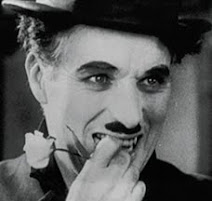Oy.
LOS ANGELES (New York Times) — The Walt Disney Company, in a move that gives it a commanding position in the world of fantasy movies, said Tuesday it had agreed to acquire Lucasfilm from its founder, George Lucas, for $4.05 billion in stock and cash... Mr. Lucas, who is 68 years old, had already announced he would step down from day-to-day operation of the company.After Disney bought Pixar in 2006 (and after the company had earlier said it would resist being absorbed), and the original features its founders had wanted to do were complete -- Toy Story (Toy Story 2 and 3 were afterthoughts); Finding Nemo; Monsters, Inc.; The Incredibles (Which needed a sequel but didn't get one); Ratatouille, and Wall-E -- Pixar's work fell off.
Combined with the purchase of Marvel Entertainment for $4 billion ... and of Pixar Animation Studios for $7.4 billion ... strengthens the legacy of Robert A. Iger, Disney’s chief executive, who has become known for his aggressive expansion of the company since taking charge in 2005.
...
Like the Marvel acquisition, the Lucasfilm purchase caught Hollywood and Wall Street by surprise... In a hastily convened conference call with investors ... Mr. Iger said Disney planned to revive the Star Wars franchise and release a seventh feature film in the series in 2015, with new films coming every two or three years thereafter. Mr. Lucas will be a consultant on the film projects, Mr. Iger said.
It was less edgy, less spontaneously creative. It was less about the ideas of four guys who remembered what it was like to be a child (something Disney forgot about decades ago) and built a company to capture that magic in Computer-Generated, animated images.
Their work was different than almost any previously-created animated features, whether in classic 2D cell animation or computer graphics. The shadow of Disney was omnipresent -- they had been the gold standard of American commercial animation for generations. But Pixar's characters were being designed by animators who had grown up with a completely different perspective on art and design.
Rather than taking Disney's classic animations, or Warner Brothers' cartoons as their model and building on it, Pixar's influences were things like Ghost In The Shell, or 'Manga' and Marvel; online computer games; Sin City and 'Sandman' and The Watchmen; Miyazaki's Swept Away, "My Friend Totoro"; or music videos on MTV. Their work was original -- and while animators can't help but acknowledge a debt to Disney's influence in creating an art form, what they were doing was so clearly not influenced by The Big Mouse.
Pixar had so far outclassed Disney's animation efforts of 1980 -2000 that, when the acquisition was announced, I wasn't surprised -- Da Mickey acted predictably and absorbed the competition (What was disappointing was that Pixar's founders had done it). But instead of allowing Pixar's original vision to energize Disney, they forced Pixar to modify it's character design, timing and art into Disney's corporatized look-and-feel.
LucasFilm and ILM started out the same way -- a bunch of film-school geeks who had cutting-edge ideas about advancing the technology of making films, of introducing computer-assisted filming and refining it until it became an industry standard. Lucas and company made a good deal of money from creating software packages for the film industry, and things like their THX sound system for theaters.
Just those two ideas showcased part of Lucas' business acumen. There was more money in changing the standard of how films were made, or presented to audiences, than just in making the films themselves. Industrial Light and Magic's workshops and CG teams spun off an entire industry that eliminated the need for fully-dressed sets and ushered in the era of greenscreens.
Lucas and his collaborators came of age in the early-to-mid 1960's, and had a hit with "American Graffiti", but really took off with a classic, episodic sci-fi tale; a mildly campy Star Wars: Episode Four -- A New Hope. And every two years or so, we lined up around the block to see The Empire Strikes Back and The Return Of The Jedi. Kids bought the toys, the lunchboxes, and grew up to take their own kids to see Episode One.
But the "prequel" episodes weren't as fun as the originals; they seemed to take themselves too seriously. And Lucas' company, which began as a way cool thing in 1972, had ended up taking itself way too seriously. It had become more about being a business, pushing a 'product' that tied in to so much more marketing: The Greedo and Clone War action figures, the Anakin Skywalker Burger King Glasses, than the real creative magic that was the impetus for getting into film making in the first place.
So, Disney. It almost seems like a natural progression -- and, aber natürlich, George gets a really tidy sum. I'm not totally surprised, but won't be lining up to see Episode Seven.
________________________________________________________________________
(An earlier version identified the first Star Wars film as "Episode Six", and the first Disney effort to revive the series as Episode Nine. Shame on me.)



No comments:
Post a Comment